In spring and summer, I tend to grow my lettuce and greens as individual plants, and I harvest them by picking individual outer leaves. But during the cooler times of the year I often switch to the cut-and-come-again method, where I sow the seeds densely and harvest bunches of leaves with a knife.
Briefly, after a harvest, the plants look like stubs until they grow new leaves for you to cut again.

Seeds are relatively cheap for lettuce and greens, which is another reason to use this growing method. What follows is my experience with the cut-and-come-again method, especially as it relates to Southern California.
Varieties
I use any variety. For greens and lettuces alike, I try to mix colors and leaf shapes and textures because it’s more appealing to look at and eat.

Renee’s has this blend of lettuce varieties sold specifically for the cut-and-come-again style. The blend is also called a “baby mesclun” mix since the leaves are meant to be cut when small.
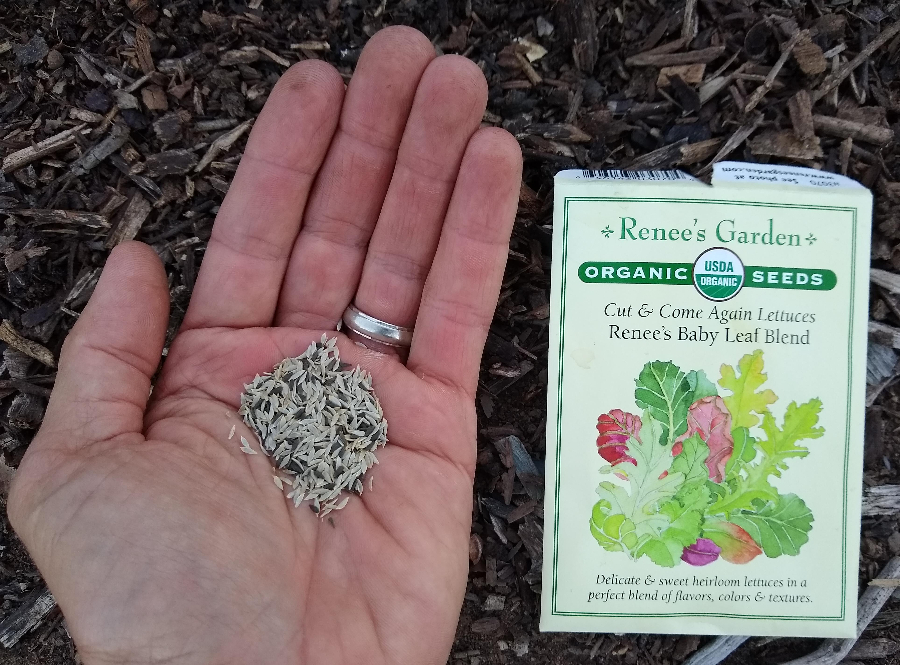
Keep in mind that the different types of lettuce and greens grow at different speeds and to different sizes so some will crowd others and the slower or smaller types seem to disappear. For example, chard grows more slowly than choi so you can sow more chard seeds or sow the chard in its own section.
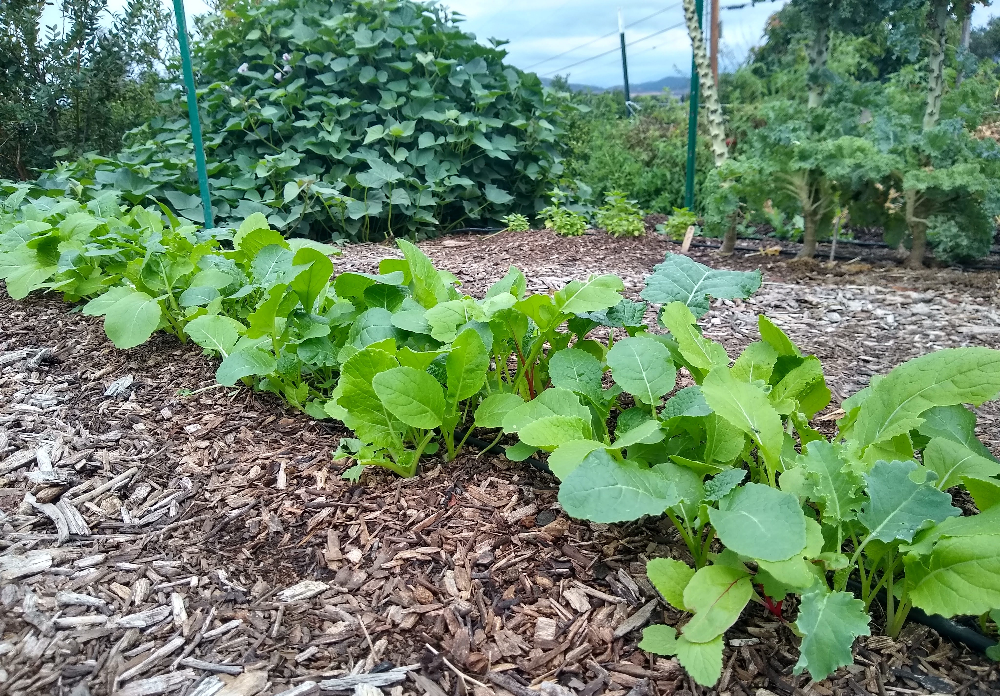
Timing for Southern California
Start a cut-and-come-again bed in all seasons except late spring and summer unless you live close to the beach, where it rarely gets over 80 degrees.
My favorite time to start is at the end of summer or very early in fall, by mid-October. My second favorite time to start is in late January.
If you start in November or December, the plants will grow slowly since the days are so short. If you start at the end of winter, your harvest time will probably be reduced since the longer and warmer days of spring will encourage the plants to bolt (make flowers).
Sowing
Because lettuce and greens seeds are both small, be aware of how deeply you sow. That is, don’t sow deeply.
Here’s how I sow: I sprinkle the seeds so that they’re about a half inch apart, and then I sprinkle compost over the seeds until I can no longer see the seeds. Don’t sprinkle more compost than that or else the little seeds will have trouble germinating.
Lettuce and greens seeds germinate fast, usually within one week. However, lettuce seeds especially cannot dry out during that week of germination so keep the bed showered with water as necessary.
If you have a garden bed with many weed seeds, then be sure to first make a stale seedbed. (More on creating a stale seedbed in this post.)
Alternatively, you can grow your lettuce and greens in a container. One year for Christmas I grew cut-and-come-again lettuce in containers for all of my family such that the plants were ready for their first harvest at the time I presented them as gifts.
If you don’t want to sow seeds, you can buy seedlings and just plant them densely.
Fertilizing
If you begin with fertile soil, either by adding compost, manure, worm castings, or some other fertilizer, then you shouldn’t have to add anything else during the crop’s life. I have never seen a need to do so with my cut-and-come-again plantings in the ground or in containers (with good potting soil).
Harvesting
Start your harvest whenever the leaves are at the size you want to eat them. For me, that’s at four to six inches tall, but there’s nothing wrong with waiting until the leaves are taller.
Cut the leaves off an inch or two above the soil level. If you cut lower than this, you’ll damage the crown of the plant, which is where new leaves form, and the plant might die.
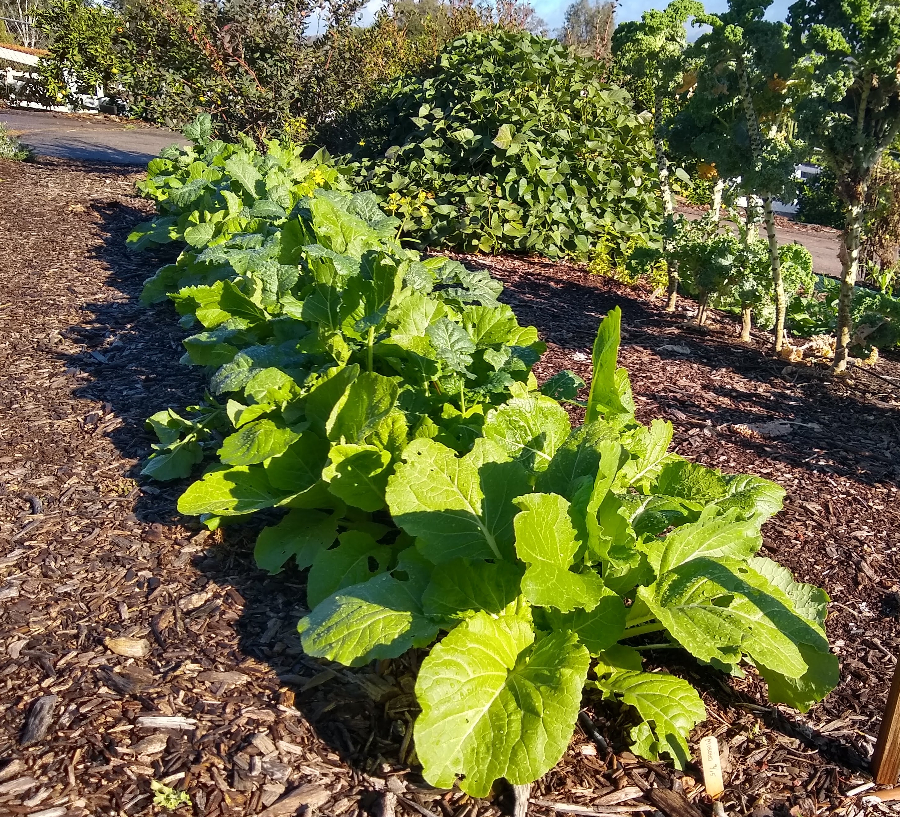
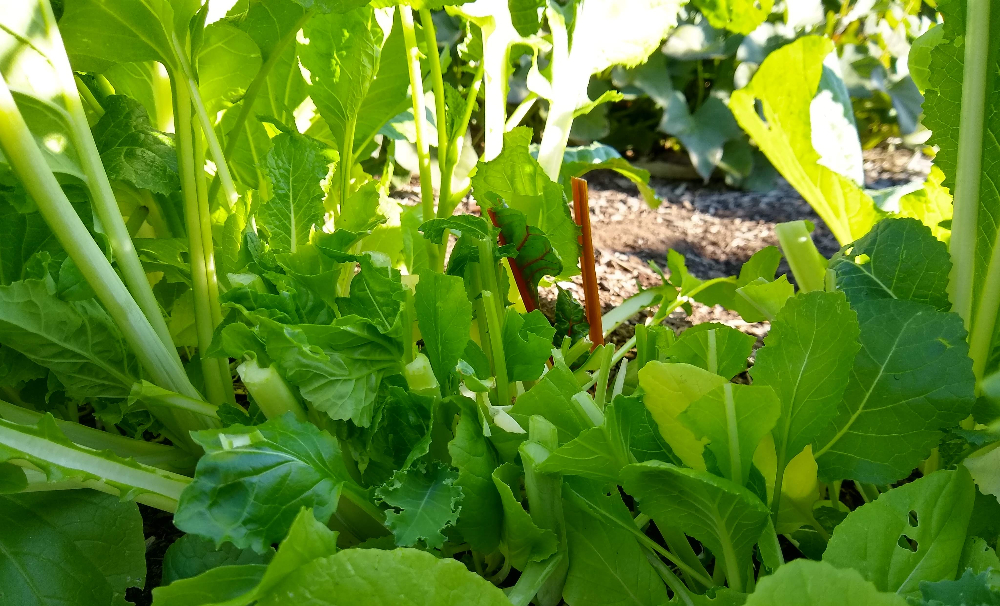
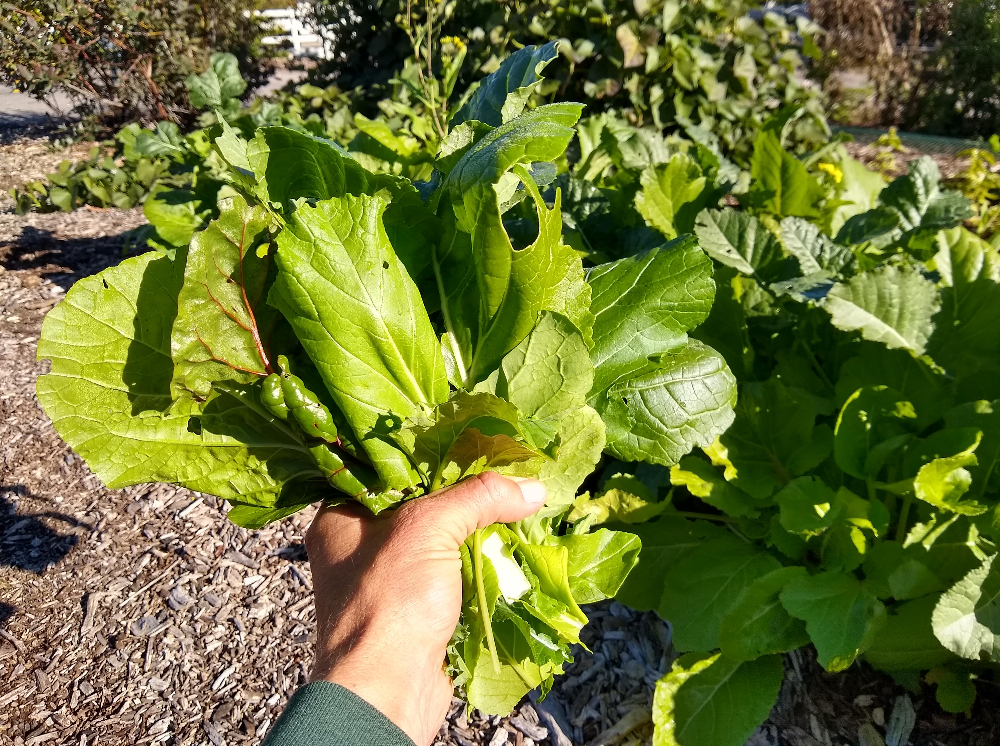
Use scissors or a knife. I prefer a knife — straight blade as opposed to serrated. Lately, I’ve been using an Opinel No. 8.
If there’s dirt on any leaves, dunk them in a bucket of cold water. If the water isn’t cold, the leaves will go limp. You can store them in the fridge if you’re not going to eat them immediately, but make sure they’re dry before putting them into the fridge or they’ll become soggy in there.
After cutting for harvest, the plants will rapidly grow new leaves, and you’ll be able to cut the same patch again in a week or two.
Bolting
You might get three or more harvests from your patch before the plants bolt. All lettuce and greens plants end their lives naturally by sending up a stalk of flowers which ultimately become seed pods. I do not cry at the sight of this. I rejoice in the flowers of various colors as they attract all sorts of bees, syrphid flies and other insects that pollinate our other vegetables and eat pest insects. I leave the flowers until I need the area for other vegetables.
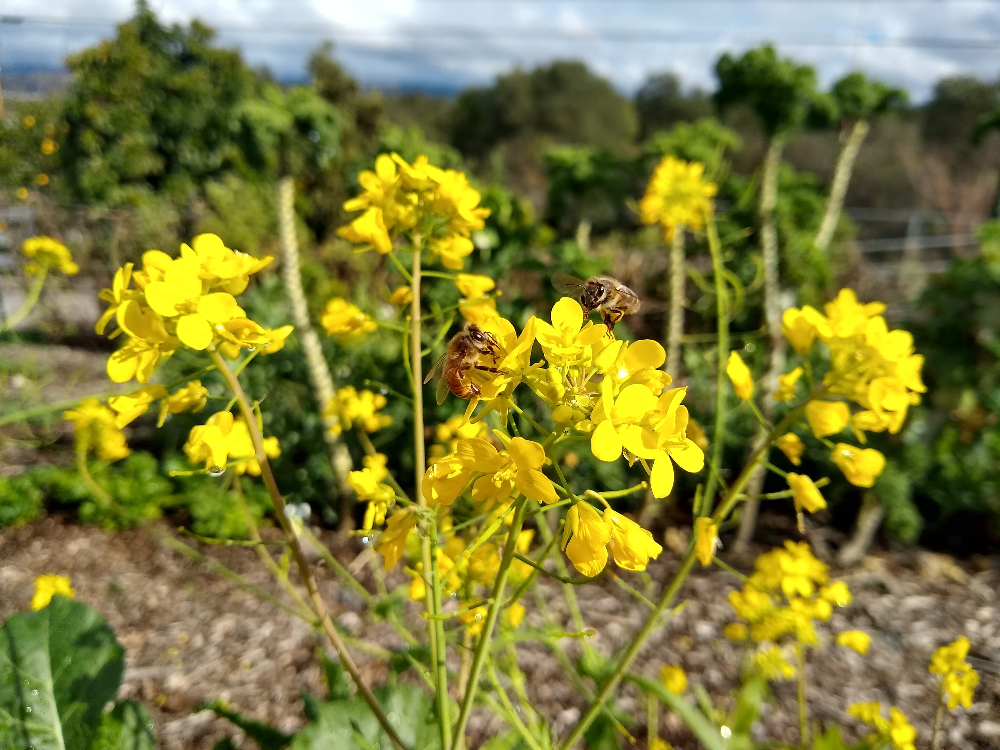
Once the plants bolt they will taste more bitter, however, so you might not want to eat their leaves any longer. I continue to pick some for my chickens, which don’t mind the bitterness.
I also keep an eye on the forming seed pods. Don’t let them dry and burst or you will have new lettuce and greens plants popping up. Then again, you might want that.
Here’s a video of Renee Shepherd showing how she sows and harvests cut-and-come-again lettuce in a container at Roger’s Gardens in Corona Del Mar
All of my Yard Posts are listed here.
Your generous support keeps the Yard Posts coming. Thank you!

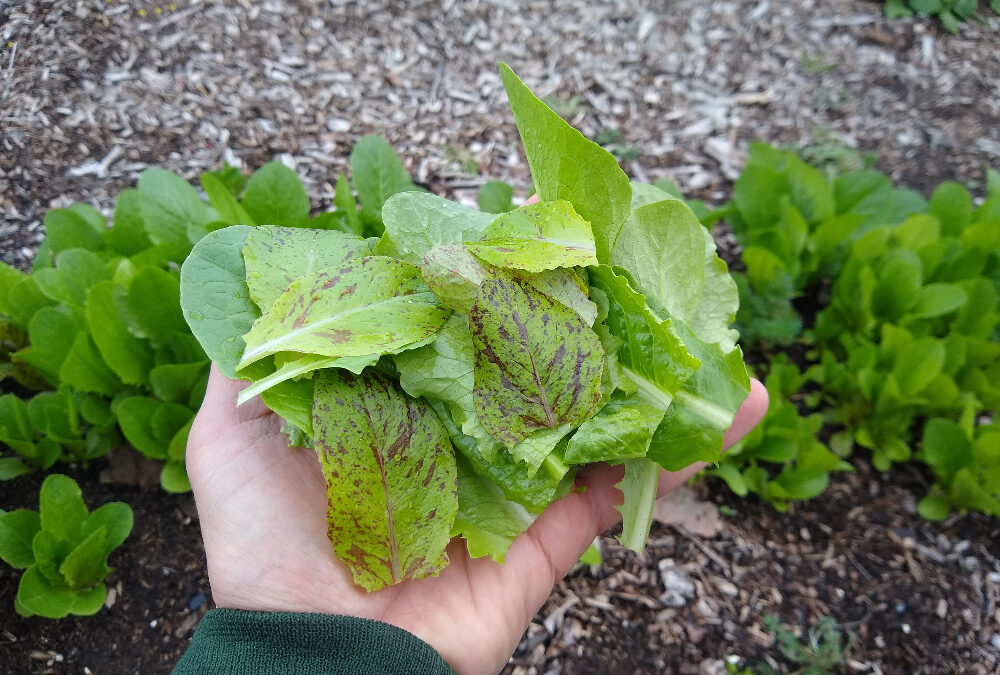


Received my Fuerte’s can’t wait to eat them! We’re in Sonoma where it has been a deluge mostly on vs off for weeks. My arugula from October/November is huge but probably not great tasting at this point. What are your thoughts on scattering lettuce seeds in my raised beds while we have this inundation of rain? Would I bother covering with compost if it could wash away? I have many many seed packets so could experiment.
Hi Mariangela,
I bet you could get germination without even covering them right now. To make it more likely, I would broadcast the seeds and then rake through them once. That would probably be enough.
Hi Greg,
A friend has an Avocado tree he bought at Home Depot about 7 years ago, he doesn’t remember which variety it is, but it is starting to set flowers. He is in Oakley, Ca about 20 miles East of me in Concord ,Ca and I’m about 25 East of San Francisco. Any idea which Avocado might be setting flowers now?
Hi Tony,
I know a Fuerte near me that is in full bloom right now. Some Fuertes in some locations bloom very early. Other varieties that bloom early and that you would be able to get from a Home Depot are Mexicola, Mexicola Grande, and maybe Pinkerton.
Researching before I go all willy nilly in the yard. (Which is what I have done in the past.)
Newly retired, I can now read up on what I want to grow.
Through other research, I purchased seed packets from Renee’s and Urban Farmer in Indiana.
I will be planting the baby come again lettuces. Do to space, I am thinking an under the bed plastic storage container which would also be convenient for relocating out of the sun. I am going to put drainage holes in. If you were doing this, how far apart would you space those?
Also, do you recommend a mulch or straw – and what kind? I see you use wood chips on the ground.
Thanks in advance,